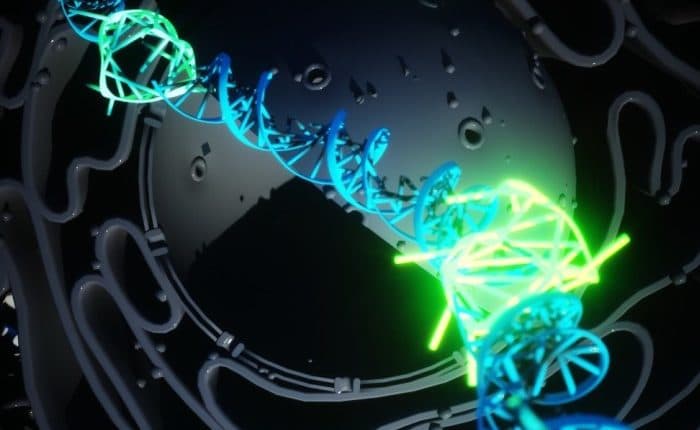For decades, students throughout the world have been learning about Deoxyribonucleic Acid (DNA). While each one of us may have heard a different lesson, the content is always the same-“DNA is a double-stranded molecule held together by weak hydrogen bonds between base pairs of nucleotides.” However, a new study by scientists at the Imperial College of London might suggest a different approach to our understanding of the biozyme, indicating that quadruple stranded DNA particles might form in healthy living cells.
Before we get down to how the discovery was made, we have to understand what the terms ‘double stranded’ and ‘quadruple stranded’ means. It has been established that DNA molecules are made up of 5 nucleobases-adenine, cytosine, guanine and thymine, and uracil. However, since Thymine and uracil are identical except for the presence of a methyl group that uracil lacks, we usually just consider 4 nucleobases in general. Nucleobases are the building blocks of nucleotides, which in turn, form components of nucleotides (like DNA and RNA). Thus, a molecule like the DNA or the RNA is just a configuration of one of these 4 nucleobases, which can align in a number of different ways.
While earlier, it was assumed that for the formation of DNA, we have to witness a ‘double strand’ bonding between the 4 bases, scientists have discovered a square like quadruple stranded configuration between four guanine bases which might constitute a new version of the molecule we did not expect to see.
When we say ‘new’, it’s not entirely new. Quadruple stranded DNA molecules have been found in some cancer cells, along with some lab-based chemistry experiments. However, this is the first time that the variation of the molecule has been witnesses in healthy, living cells, as a byproduct of normal cellular functions. Thus, scientists worry that we might have to scrap our understanding of what’s the building blocks of life, and try to revise it anew.
“We’ve undoubtedly demonstrated that the quadruple-strand DNA forms in living cells,” says Marco Di Antonio at Imperial College London. “This forces us to rethink the biology of DNA.”
Antonio was able to make this finding by attaching fluorescent marker to DNA in living cells, which facilitated visualization of the new feature of the molecule.
He even has a theory on what this could mean. “We know exactly what DNA does,” says Di Antonio, “but how does the cell know where to express genes and how much protein to make?” He concludes that the quadruple stranded square like variation of nucleic acid might provide the same functionality of an epigenetic marker, which are basically chemical tags on DNA that increase or decrease the activity of genes. This theory was reached on by making the speculation that the 4 strand form holds the molecule open and facilitate the reading of the genetic code and thus the production of proteins
“There is a sort of crosstalk between the formation of quadruplex DNA and epigenetic markers,” says Di Antonio. “The quadruplex form is an epigenetic mark in its own right.”
